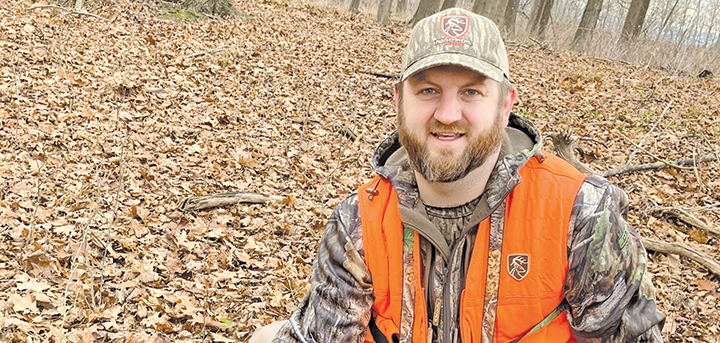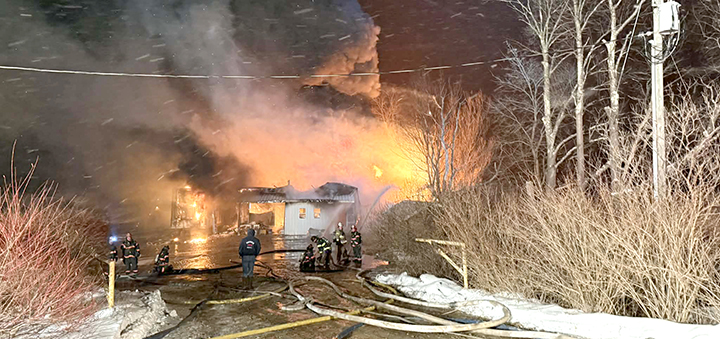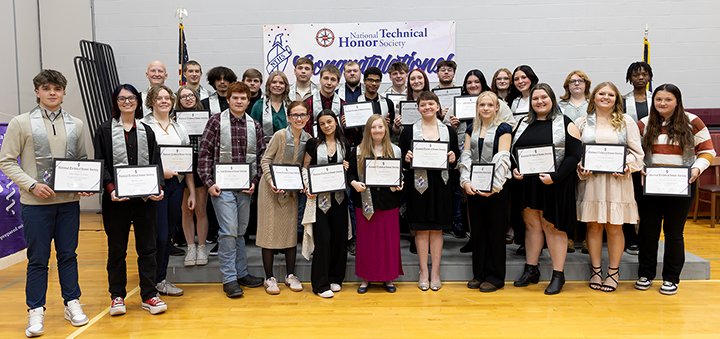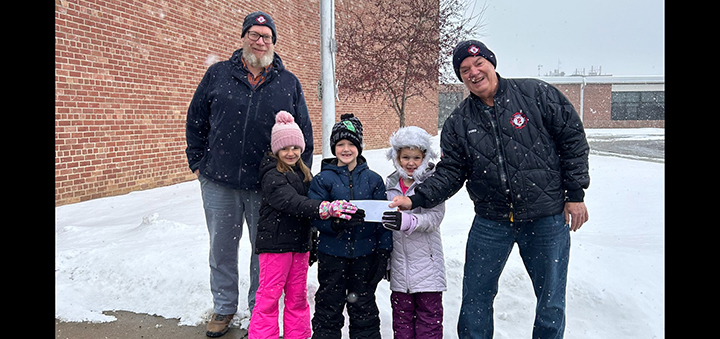Outdoor Chenango: Trying copper instead of lead
Last fall, I was invited to give a presentation on the NYS Chapter of the National Wild Turkey Federation at the New York Conservation Council annual meeting in Rome, NY. When I got to the meeting, I took a seat in the back of the room to wait my turn. I was supposed to go up right before lunch. The first speaker was Gordon Batchelor, who was the NYSDEC head wildlife biologist for over a decade, and he talked about different “controversial” topics in the hunting world.
From the use of drones to recover deer to non-lead bullets for deer. His non-lead bullet talk was interesting to hear. He explained meeting with non-game biologists in the early 2000s who had bald eagle bloodwork showing high amounts of lead and it caused him to ponder if non-lead bullets for big game would be feasible. Eagles were still on the Threatened and Endangered Species List at the time, which could have allowed for some big steps to be taken from the US Fish and Wildlife Service. So Gordon started testing non-lead bullets himself as his neighbor conveniently was a writer for a national shooting magazine so he got to pick his neighbor’s brain about the ballistics side of things before hand loading some ammunition. Gordon’s main point was that the topic of non-lead ammunition should be led by hunters and not the anti-hunting community. He encouraged everyone in the room to give non-lead bullets a try in their firearm to see how well it shoots. If it shot alright, to try hunting with it. That way the hunter can be part of the conversation, even if it is to say “I tried it, but my rifle didn’t shoot it good enough compared to a lead-core bullet.”
He went on to say there is a non-profit called Hunters for Eagle Conservation that was offering up to a $60 rebate to hunters to reimburse them for the cost of a box of loaded non-lead ammunition or a box of non-lead bullets for handloading. So basically, you could try out non-lead bullets for next to nothing.
As I have written a few times, last year I purchased a reloading setup to start reloading for my rifles. So I was intrigued by the non-lead bullet discussion and started doing some research. I looked up the organization doing the rebate program and they would not include sales tax or shipping costs in their reimbursement for non-lead ammo or bullets. You also had to provide them with a copy of your hunting license, a picture of the ammo or bullets, a copy of your receipt, and agree to do a survey at the end of hunting season before they would send you a Visa/Mastercard type gift card as your rebate payment.
It was too close to regular season for me to buy some non-lead bullets and work up handloads in time for opening day so I figured I would start doing research on bullets and could focus on finding the best bullet/powder combination in the summer of 2025 for next deer season. This went me down a rabbit hole of reading online forums, watching numerous Youtube videos, and listening to podcasts all about different non-lead bullets.
Here are a few things that I have learned from my research. First is that because copper is less dense than lead, a bullet of the same weight has to be longer. Therefore, sometimes bullets at the upper end of the weight spectrum for a given cartridge might not be an option in non-lead because they would make the loaded cartridge too long to fit in the magazine of the gun or possibly the chamber of the rifle. So if you shoot a 180-grain lead core bullet in a .308, you might not be able to shoot a 180-grain non-lead bullet. However, non-lead bullets are harder than lead so they require more speed/energy to start opening up upon impact, so going a “step” lower in bullet weight allows for a close in size bullet to the original lead bullet to be shot faster. So drop the 180-grain lead to a 165-grain non-lead, and you get a bullet who has a similar shape to the 180-grain lead since it has to be bigger than a 165-grain lead bullet, but the lighter weight allows it to shoot faster.
Second, non-lead bullets perform differently than lead core bullets. They still open, or mushroom, but they almost never separate. This results in a smaller “permanent wound channel” which is the hole left in the animal from the bullet going through it. However, non-lead bullets penetrate farther than lead bullets. This means complete pass throughs, even on quartering shots. So blood trailing is better because 2 holes in an animal results in more blood loss, making it easier to track a shot animal. Animals shot with non-lead bullets typically make it another 30-50 yards after the impact of the bullet compared to lead bullets but they expire equally as fast.
The last thing to know is that technology has changed so drastically around bullets that even if you tried non-lead bullets 5-10 years ago, the latest bullets have a ton of science behind them combined with learning from early bullet flaws. Barnes TTSX and TSX bullets have relief grooves cut into them to allow some material to move into those voids as the bullet gets “squished” by the rifling of the barrel. Smooth sided bullets would bind up and cause erratic flight in early solid copper bullets. The lead core of most bullets allows the center of the bullet to squeeze in as the bullet engages the rifling. Hornady makes the CX, which is a copper alloy that is supposed to be softer than pure copper, so it opens on impact better and also has relief grooves in it.
When muzzleloader season was right around the corner, I looked at my supplies and noticed I was down to 4 bullets. When I went to the store, they did not have the exact same bullet I had been shooting. So, I opted to buy a box of Barnes 290-grain pure copper bullets with sabots to try. I decided to up my powder charge to 3 50-grain Triple-7 pellets to gain velocity to held the bullet open. They shot very well in my muzzleloader and I was confident in taking shots out to 150 yards. I was able to shoot a doe at roughly 50 yards with this setup and she ran maybe 50 yards after a heart and lung shot. Based on the shot and distance, it’s hard to say what difference the copper bullet made but I look forward to continuing to use them and seeing how they work at longer shot distances.








Comments